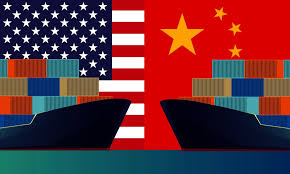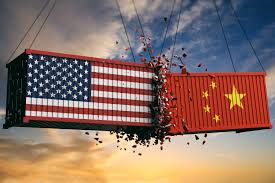The Current Trade Sanctions Landscape Against China

While everyone watches Russia’s President Putin for signs that he plans to order an invasion of its neighbor Ukraine, it may be helpful to take stock of where we are with the ever-changing maze of trade sanctions compliance. The Biden Administration has elevated international trade sanctions and export controls as a top priority. In contrast to the Trump strategy, Biden has dedicated more effort to coordinate trade regulation with our allies and to focus aggressive efforts against our rivals, most especially China. If Russia decides to invade Ukraine, the United States and Europe are prepared to implement a robust set of sanctions that will complicate global commerce in several significant ways.
Aside from this potential upheaval, the Biden Administration, in 2021, was singularly focused on China. In this respect, the U.S. national security actors has sought to continue restricting China’s access to electronic communications products used to conduct surveillance of political opponents and repressed minorities, including the Uyghurs, which constitute approximately 2.5 percent of China’s population.
The Treasury Department’s Office of Foreign Asset Control (“OFAC”) continues to designate prohibited nationals as a means to leverage economic pressure to convince foreign interests to modify policy positions. Each year, OFAC removes some designated parties in response to changed circumstances. However, OFAC removals do not exceed the number of new entities and individuals added each year. As of the end of 2021, OFAC had designated nearly 10,000 organizations and individuals as prohibited entities or individuals. Year-over-year, OFAC has increased the number of designated entities and individuals.

Trade compliance with sanctions is further complicated by the Department of Commerce’s Bureau of Industry and Security (“BIS”) export controls. BIS has devoted significant attention to export controls against China.
BIS has expanded its use of the Entity List to target Chinese companies and thereby impose restrictions or even flat prohibitions on export of specified products under the Export Administration Regulations (“EAR”). To this end, BIS has added over 60 Chinese companies to the Entity List based on findings that these companies are engaged in activities that conflict with the national security of the United States. In practice, the Entity List designation will vary across various products depending on potential use of the specific product. BIS’ focus in the last year has targeted entities involved in human rights violations and improper surveillance activities. As part of this effort, BIS designated a large number of entities associated with China’s industrial-military complex.

To strangle China’s access to military-type equipment, BIS has prohibited exports of various products to China, Russia, Venezuela, Burma and Cambodia. Similar to the legal standard applied by OFAC to prohibited entities and individuals, BIS prohibits export of various items if the exporter has reason to know that the exported item is intended for a prohibited military end use.
BIS expanded application of the military end use rule to include a range of support related activities, including installation, maintenance, or repair of these products. This rule change has raised difficult line-drawing issues for companies and determination of military end users. The Biden Administration is expected to expand the list of prohibited entities in China subject to the military end use rule.















